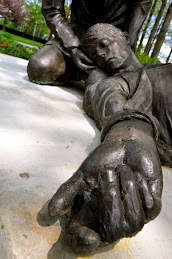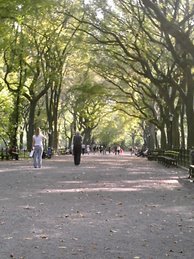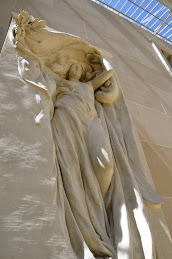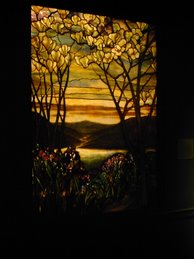By Joseph Kellard
Touted as the most authoritative, comprehensive book on the Sovietlabor camps, "Gulag" by Washington Post columnist AnneApplebaum recounts the many facets of this decades-long slavesystem. Among her topics are the gulag's origin and expansion, thedistinctive work and living conditions of the various camps, andhow prisoners survived, rebelled, escaped--and died.
While "Gulag" offered what were, to me, some surprising details--such [as] that numerous prisoners were actually released--Applebaumalways returns, whether implicitly or explicitly, to the essential evilof the camps.
One example is in her comparison of Nazi and Soviet camps. Sheargues that the Soviet camps focused more on exploiting labor thanon deliberately killing "enemies of the people," whereas the Naziconcentration camps, where a Jew's death was virtually assured, thereverse was true. Gulag prisoners usually died, not by beingdeliberately killed, but by the system's "gross inefficiency andneglect." Yet Applebaum demonstrates, for example, that certainlabor camp projects, such as useless grand canals, reflected thecommunists' desire to kill for killing's sake:
"A propaganda slogan declared that the ' Danube-Black Sea Canal isthe tomb of the Romanian bourgeoisie!' Given that up to 200,000people may have died building it, that may have indeed been thecanal's real purpose." (p.456)
In her epilogue of this primarily journalistic account, Applebaumproperly touches on such matters as the post-Soviet population'swidespread evasion of this important part of its nation's history, andpoints to consequences of this (e.g., Putin's authoritarian Russia). But for a book of this scale and subject, she draws virtually nocause-and-effect relationship between communist ideology and thegulag. Worse, here is Applebaum's conclusive philosophic commentary:
"Only our ability to debase and destroy and dehumanize our fellowman has been--and will be-- repeated again and again" and "themore we know of the specific circumstances which led to eachepisode of mass torture and mass murder, the better we willunderstand the darker side of our own human nature."
In other words, it's not ideas but evil "human nature" thatultimately caused the gulag. To the Objectivist reader, however, "Gulag" offers manyconcretizations of communism. As I read the various injusticesSoviet citizens suffered under this slave system (within a slavestate), I drew many parallels between these and what AmericanCommunists and other leftists leveled then against capitalism andthe United States. Here's just one of various parallels, and recallhere the leftists' charges that capitalists "exploited" their workersand that the Soviet Union held the most promise for "the commonman."
"Ivan Nikishov, who became the boss of Dalstroi in 1939, in thewake of the purges, and held the post until 1948, became infamousfor accumulating riches in the middle of desperate poverty. [Prisonbosses] even began to compete with one another, in a fantasticversion of keeping up with the Jonses." (p.267-268)
Please post a comment about this article. For private comments, email Joseph Kellard at Theainet1@optonline.net.
Copyright © 2007 Joseph Kellard
Tuesday, June 26, 2007
Sunday, June 10, 2007
Eye Appeal is Buy Appeal in Real Estate
Home staging on rise for owners seeking to sell
By Joseph Kellard
Decorator Evelyn Truhn stands in a young lady’s bedroom evaluating three teens in bikinis on a wall. The trio return her stare from a poster of the surfer movie “Blue Crush,” but Truhn says it must go. “You’d expect it in a kid’s room,” the Oceanside woman remarks, “but a poster with bikini-clad girls when you want to sell is not good.”
When Truhn decorates a house, she comes with an eye to strip it of most things personal -- from photos of loved ones lining a fireplace mantle to crayon drawings adorning a refrigerator – since depersonalizing is basic to her brand of decorating: home staging. While interior decorators design around an owner’s lifestyle, stagers like Truhn design a seller’s home to appeal broadly to potential buyers, inviting them to envision how they would live there. Toward this end, depersonalization is one principle that guides home stagers. Others include de-cluttering and creating more space.
As Truhn continues her consultation for a realtor at the five-bedroom, three-and-a-half bath expanded ranch in Oceanside, she finds much to de-clutter in a boy’s room, including hockey sticks piled in a corner. She considers mounting a rack for them over the bed. “Like you would put a guitar on the wall,” she says.
In the living room, which is split by a double-sided fireplace, sits a Stairmaster like an elephant in the room. Truhn eyes the machine with a strategy to make space. “We’ll put it in the corner to make it less obtrusive,” she decides.
Erik Reilly, a realtor from Century 21 Mac Levitt in Oceanside, has had this Gifford Avenue ranch, priced at $559,999, on the market for several months after the family moved to Israel. This is Reilly’s first stint with a home stager. Previously, realtors would simply pop some brownies in the oven or place fresh-cut flowers on a table in a home in hopes of enticing prospective buyers. But Reilly recognizes strategies are changing. “Obviously there are things that must be done here,” he says, “but I wanted something to be suggested that’s different.”
Truhn estimates the changes she suggests will cost about $3,000. These include redesigning the living room and kitchen, both a mix of modern and country décor. The living room, with its dark wall paneling and ceiling beams, reminds her of a ski lodge that clashes with its cosmopolitan crimson couch. Yet the kitchen’s white Formica countertop and stand-up, worn wooden cabinet seem to go, she says. The walls, however, are painted brown, pale blue and a bright-blue faux finish, which Truhn vows to coat with a solid cream color. “Never paint walls white,” she says, stating another staging principle.
With her Canon digital, she takes several photos around each room and will organize them into a binder to display to homeowners when selling her staging strategies. Stagers may suggest simply rearranging some furniture, or refurbishing whole rooms. And with the measurements she takes, Truhn heads to furniture stores to buy particular pieces, from lamps to bed sets, or she dips into her self-storage facility for standard pieces she reuses, including curtains and kitchen sets.
At the Oceanside ranch, she will also remove the dining room table’s leaves to create space, paint a bathroom’s walls beige to coordinate with the aqua toilet, tub and sink, and power wash mold from the concrete front stoop. She even tests the doorbell.
Truhn learned the principles of her craft from Lori Matzke, author of “Home Staging: Creating Buyer-Friendly Rooms to Sell Your House” and founder and president of Center Stage Home in Minneapolis, where Truhn attended one of her workshops.
While home staging stretches back to the 1970s, the field only started its soar in the late ‘90s, when Matzke first searched the Internet for information and found one Web site on the subject. “The general view then was that if you needed your home to be staged, you really had to live in a dump,” Matzke says. Today, however, staging is featured in popular home decorating magazines and on shows such as Design to Sell on HGTV.
Matzke says homeowners stage for two basic reasons: to increase either the price on their house or its chance of selling. She often encounters couples paying two mortgages because they’ve yet to sell their former home. Mary and Mike Monahan of Wantagh had a three-bedroom, one-and-a-half-bath ranch on the market for three months before they hired Truhn to help sell it. After her staging, their house sold within six weeks. “We had Evelyn assess the crucial points that were distracting from the sale perhaps,” Mary says.
Among those distractions was a kitchen painted cranberry. Mary learned that, for many people, her favorite color can be overwhelming in a kitchen, and Truhn painted it a neutral color, an almond that opened up the room.
“I like that she was able to give a fresh perspective to the house and found decorative ideas suitable for everybody,” Mary says.
Matzke says a major hurdle to selling people on staging is that many feel intimidated or insulted when a consultant suggests changes to their homes. “They think you’re criticizing their décor,” she continues. “But basically I tell them that we’re not trying to sell your taste, we’re trying to appeal to a lot of different tastes out there that might be interested in your house.”
“I didn’t really care,” says Eileen Florin, recalling when Truhn redecorated her three-bedroom, two-bath split ranch in Oceanside, where she lived with her husband Rich for 28 years. “I said let her do what she has to do, I’m not going to live here anymore.”
The couple hired Truhn in January before their home hit the market. Its eyesores included the kitchen cabinets and wallpaper that their dog enjoyed chewing on. Truhn painted the room yellow and hung curtains that Eileen says certainly clashed with her tastes, and she also nixed their family photos, repositioned the living room couch and de-cluttered.
Ultimately, the Florins shelled out $3,600 for Truhn’s expertise and sold the ranch within two weeks to the first couple that came by.
Would it have sold so quickly without the staging? “Absolutely not,” Eileen says.
Liz Wallace, co-owner of Century 21 Sherlock Homes in Rockville Centre, said she began to use Truhn and other stagers last summer, when the market tilted in favor of buyers.
“If buyers are seeing a lot more houses, say 12, yours has to be the one that stays in their head -- and staging does that,” Wallace says, noting that the trend only hit Long Island recently after a seller’s market prevailed for several years.
Sherlock Homes found that sellers who staged were getting more looks and money, staging is a more innovative way to sell, and that selling is still all in the presentation.
“It’s like I always say,” Wallace says, “if you’re going to the prom, you have to wear a pretty dress.”
Please post a comment about this article. For private comments, email Joseph Kellard at Theainet1@optonline.net.
Copyright © 2007 Joseph Kellard
By Joseph Kellard
Decorator Evelyn Truhn stands in a young lady’s bedroom evaluating three teens in bikinis on a wall. The trio return her stare from a poster of the surfer movie “Blue Crush,” but Truhn says it must go. “You’d expect it in a kid’s room,” the Oceanside woman remarks, “but a poster with bikini-clad girls when you want to sell is not good.”
When Truhn decorates a house, she comes with an eye to strip it of most things personal -- from photos of loved ones lining a fireplace mantle to crayon drawings adorning a refrigerator – since depersonalizing is basic to her brand of decorating: home staging. While interior decorators design around an owner’s lifestyle, stagers like Truhn design a seller’s home to appeal broadly to potential buyers, inviting them to envision how they would live there. Toward this end, depersonalization is one principle that guides home stagers. Others include de-cluttering and creating more space.
As Truhn continues her consultation for a realtor at the five-bedroom, three-and-a-half bath expanded ranch in Oceanside, she finds much to de-clutter in a boy’s room, including hockey sticks piled in a corner. She considers mounting a rack for them over the bed. “Like you would put a guitar on the wall,” she says.
In the living room, which is split by a double-sided fireplace, sits a Stairmaster like an elephant in the room. Truhn eyes the machine with a strategy to make space. “We’ll put it in the corner to make it less obtrusive,” she decides.
Erik Reilly, a realtor from Century 21 Mac Levitt in Oceanside, has had this Gifford Avenue ranch, priced at $559,999, on the market for several months after the family moved to Israel. This is Reilly’s first stint with a home stager. Previously, realtors would simply pop some brownies in the oven or place fresh-cut flowers on a table in a home in hopes of enticing prospective buyers. But Reilly recognizes strategies are changing. “Obviously there are things that must be done here,” he says, “but I wanted something to be suggested that’s different.”
Truhn estimates the changes she suggests will cost about $3,000. These include redesigning the living room and kitchen, both a mix of modern and country décor. The living room, with its dark wall paneling and ceiling beams, reminds her of a ski lodge that clashes with its cosmopolitan crimson couch. Yet the kitchen’s white Formica countertop and stand-up, worn wooden cabinet seem to go, she says. The walls, however, are painted brown, pale blue and a bright-blue faux finish, which Truhn vows to coat with a solid cream color. “Never paint walls white,” she says, stating another staging principle.
With her Canon digital, she takes several photos around each room and will organize them into a binder to display to homeowners when selling her staging strategies. Stagers may suggest simply rearranging some furniture, or refurbishing whole rooms. And with the measurements she takes, Truhn heads to furniture stores to buy particular pieces, from lamps to bed sets, or she dips into her self-storage facility for standard pieces she reuses, including curtains and kitchen sets.
At the Oceanside ranch, she will also remove the dining room table’s leaves to create space, paint a bathroom’s walls beige to coordinate with the aqua toilet, tub and sink, and power wash mold from the concrete front stoop. She even tests the doorbell.
Truhn learned the principles of her craft from Lori Matzke, author of “Home Staging: Creating Buyer-Friendly Rooms to Sell Your House” and founder and president of Center Stage Home in Minneapolis, where Truhn attended one of her workshops.
While home staging stretches back to the 1970s, the field only started its soar in the late ‘90s, when Matzke first searched the Internet for information and found one Web site on the subject. “The general view then was that if you needed your home to be staged, you really had to live in a dump,” Matzke says. Today, however, staging is featured in popular home decorating magazines and on shows such as Design to Sell on HGTV.
Matzke says homeowners stage for two basic reasons: to increase either the price on their house or its chance of selling. She often encounters couples paying two mortgages because they’ve yet to sell their former home. Mary and Mike Monahan of Wantagh had a three-bedroom, one-and-a-half-bath ranch on the market for three months before they hired Truhn to help sell it. After her staging, their house sold within six weeks. “We had Evelyn assess the crucial points that were distracting from the sale perhaps,” Mary says.
Among those distractions was a kitchen painted cranberry. Mary learned that, for many people, her favorite color can be overwhelming in a kitchen, and Truhn painted it a neutral color, an almond that opened up the room.
“I like that she was able to give a fresh perspective to the house and found decorative ideas suitable for everybody,” Mary says.
Matzke says a major hurdle to selling people on staging is that many feel intimidated or insulted when a consultant suggests changes to their homes. “They think you’re criticizing their décor,” she continues. “But basically I tell them that we’re not trying to sell your taste, we’re trying to appeal to a lot of different tastes out there that might be interested in your house.”
“I didn’t really care,” says Eileen Florin, recalling when Truhn redecorated her three-bedroom, two-bath split ranch in Oceanside, where she lived with her husband Rich for 28 years. “I said let her do what she has to do, I’m not going to live here anymore.”
The couple hired Truhn in January before their home hit the market. Its eyesores included the kitchen cabinets and wallpaper that their dog enjoyed chewing on. Truhn painted the room yellow and hung curtains that Eileen says certainly clashed with her tastes, and she also nixed their family photos, repositioned the living room couch and de-cluttered.
Ultimately, the Florins shelled out $3,600 for Truhn’s expertise and sold the ranch within two weeks to the first couple that came by.
Would it have sold so quickly without the staging? “Absolutely not,” Eileen says.
Liz Wallace, co-owner of Century 21 Sherlock Homes in Rockville Centre, said she began to use Truhn and other stagers last summer, when the market tilted in favor of buyers.
“If buyers are seeing a lot more houses, say 12, yours has to be the one that stays in their head -- and staging does that,” Wallace says, noting that the trend only hit Long Island recently after a seller’s market prevailed for several years.
Sherlock Homes found that sellers who staged were getting more looks and money, staging is a more innovative way to sell, and that selling is still all in the presentation.
“It’s like I always say,” Wallace says, “if you’re going to the prom, you have to wear a pretty dress.”
Please post a comment about this article. For private comments, email Joseph Kellard at Theainet1@optonline.net.
Copyright © 2007 Joseph Kellard
Wednesday, June 6, 2007
Environmentalism's Inherent Cannibalism
Many Americans mistakenly believe that environmentalism represents the preservation of nature for man’s enjoyment. They see self-described environmentalists, who otherwise call themselves “nature lovers,” who want to preserve parks so that they can continue to enjoy their hikes and bike rides through nature, and thereby stop developers from building condominium complexes along these stretches of land.
But then there are radical environmentalists, those who champion the same ideological movement as the “moderate” greens, but who practice its ideas more consistently. You know, they’re the ones who even want to ban green “alternative energies,” such as windmills, since they kill birds and despoil the natural landscape, or so they argue.
So while those environmentally-correct nature lovers want to preserve Yellowstone Park from evil developers, so that they may continue to ride their snowmobiles through it, they are nevertheless confronted by radical environmentalists who want to ban snowmobiles from the park, because they’re not “eco-friendly,” according to their “science.” What’s more, the radicals are getting the support of the New York Times, which published the following brief editorial on June 6, entitled “Keeping a Watch on Winter,” and calls for the ban of snowmobiles in Yellowstone.
http://tinyurl.com/3d6pjg
“The scientific results have been consistent. The best alternative, environmentally speaking, is to do away with snowmobiles altogether.”
“They [snowmobiles] have always contradicted the mission of the national parks …”
From what I understand, the national parks were originally created for man to enjoy them, and that enjoyment includes riding his snowmobiles through them. What the so-called moderate greens refuse to understand is where their environmentalist ideology logically leads: not the preservation of nature for man, but from man.
But then there are radical environmentalists, those who champion the same ideological movement as the “moderate” greens, but who practice its ideas more consistently. You know, they’re the ones who even want to ban green “alternative energies,” such as windmills, since they kill birds and despoil the natural landscape, or so they argue.
So while those environmentally-correct nature lovers want to preserve Yellowstone Park from evil developers, so that they may continue to ride their snowmobiles through it, they are nevertheless confronted by radical environmentalists who want to ban snowmobiles from the park, because they’re not “eco-friendly,” according to their “science.” What’s more, the radicals are getting the support of the New York Times, which published the following brief editorial on June 6, entitled “Keeping a Watch on Winter,” and calls for the ban of snowmobiles in Yellowstone.
http://tinyurl.com/3d6pjg
“The scientific results have been consistent. The best alternative, environmentally speaking, is to do away with snowmobiles altogether.”
“They [snowmobiles] have always contradicted the mission of the national parks …”
From what I understand, the national parks were originally created for man to enjoy them, and that enjoyment includes riding his snowmobiles through them. What the so-called moderate greens refuse to understand is where their environmentalist ideology logically leads: not the preservation of nature for man, but from man.
Tuesday, June 5, 2007
Heroes Hike in New York Magazine
New York magazine has a very brief article on the New York Heroes Society's "Heroes Hike" to Breakneck Ridge in Cold Spring. While I've participated in this hike up the mountain a few times over the past few years, I missed the the bi-annual hike last month, but did make the hike last fall, which is captured in the article's accompany photo (that's me on the far right).
http://nymag.com/news/intelligencer/32882/
Here's a slightly edited version of what I wrote about the Heroe's Hike on my MySpace blog last September:
"Meanwhile, in early October, during my vacation, I also intend to go on the 'heroes' hike that I've been doing for a few years now with other fellow Ayn Rand fans, or, to be more specific, Andrew Bernstein fans, since this bi-annual hike was originally inspired by his novel 'Heart of a Pagan.' There's a scene in the novel in which the hero, a extraordinary college basketball player named Swoop, gets fellow students, teammates and fans to accompany him to a mountain top and profess what they are most proud of about their lives, their achievements and such. (This is a counter to the church's confessionals, where people go beg forgiveness for their 'sins.') So each spring and fall we 'Heart of a Pagan' fans climb to the top of Breakneck Ridge along the Hudson, starting in a small town called Cold Spring in upstate New York, and do same. Come join us to express your pride."
http://nymag.com/news/intelligencer/32882/
Here's a slightly edited version of what I wrote about the Heroe's Hike on my MySpace blog last September:
"Meanwhile, in early October, during my vacation, I also intend to go on the 'heroes' hike that I've been doing for a few years now with other fellow Ayn Rand fans, or, to be more specific, Andrew Bernstein fans, since this bi-annual hike was originally inspired by his novel 'Heart of a Pagan.' There's a scene in the novel in which the hero, a extraordinary college basketball player named Swoop, gets fellow students, teammates and fans to accompany him to a mountain top and profess what they are most proud of about their lives, their achievements and such. (This is a counter to the church's confessionals, where people go beg forgiveness for their 'sins.') So each spring and fall we 'Heart of a Pagan' fans climb to the top of Breakneck Ridge along the Hudson, starting in a small town called Cold Spring in upstate New York, and do same. Come join us to express your pride."
Subscribe to:
Posts (Atom)
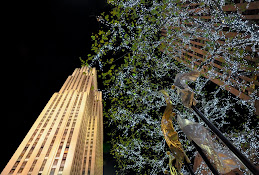
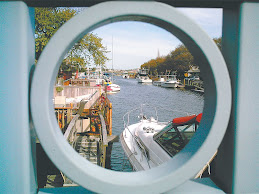






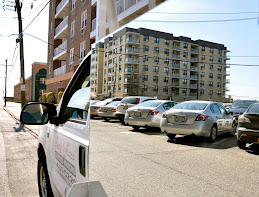
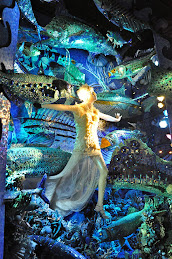
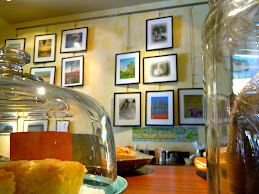

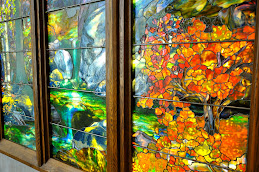






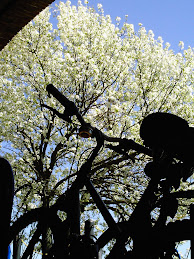

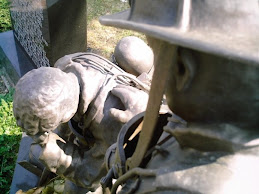
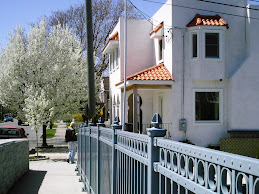
+-+June+2009.jpg)
